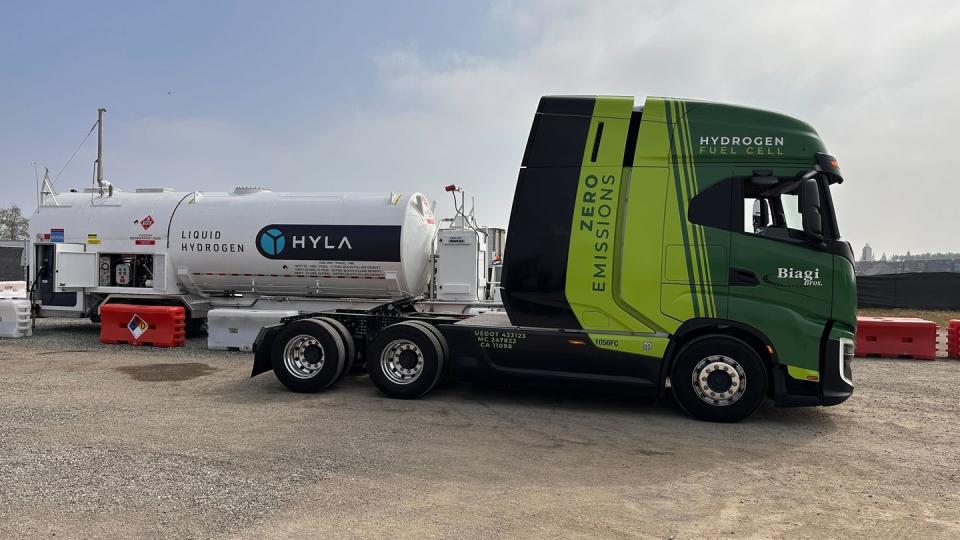
-
HYLA, a merger of HYdrogen and NikoLA, is a subsidiary of Nikola focused on building a “robust hydrogen supply chain.”
-
HYLA’s first station can refill a typical commercial vehicle in less than 20 minutes. It is located near numerous warehouses in Ontario, California, a freight transportation hub within reach of local ports.
-
The station consists of portable above-ground units, which use liquid hydrogen that is converted to gaseous form when metered into a truck and pressurized to 10,000 psi.
Nikola, an alternative fuel heavy-duty truck manufacturer with a checkered past, has taken a big step toward future success by opening its first HYLA-branded hydrogen fueling station. It was built to meet the refueling needs of the company’s own Tre FCHEV (fuel cell hydrogen electric vehicle). You could call this Nikola’s ‘Supercharger moment’, a Tesla-like move where they take charge of both chickens And the egg side of the equation, so potential customers of their Tre FCHEV semi don’t have to wonder how they will refuel their new machines.
But HYLA stations aren’t built solely to serve Nikola’s trucks: the H70 fueling standard and nozzle design they use is an industry standard also used by heavy-duty hydrogen fuel cell trucks from Hyundai and others.
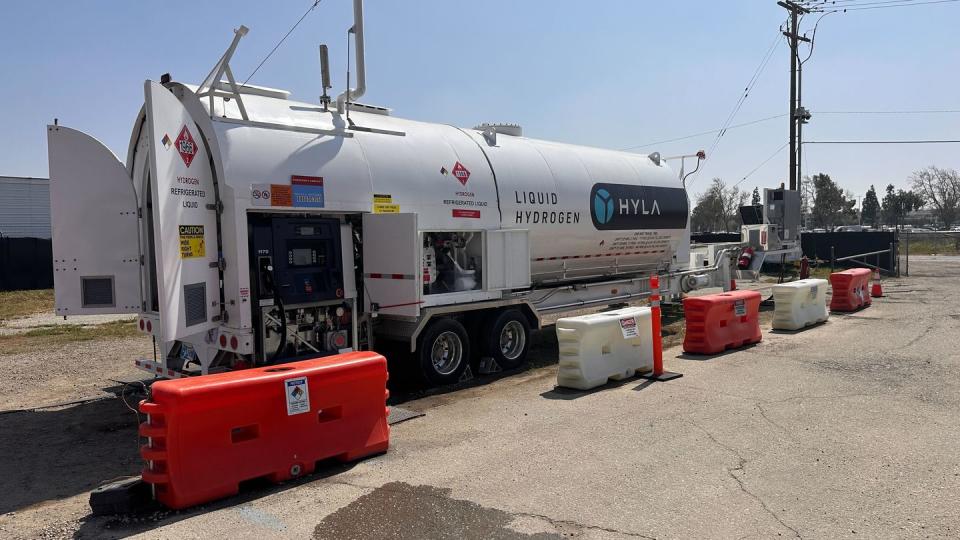

The use of liquid hydrogen solves a number of problems that the gaseous hydrogen stations for the Toyota Mirai and Hyundai Nexo can suffer from, especially capacity and downtime. A given amount of liquid hydrogen takes up only a tenth of the space of gaseous hydrogen, so the portable above-ground units (there are currently two at this location) can refill many more trucks – about 20 to 25 trucks per day, per day . unit. Additionally, the extremely cold nature of liquid hydrogen (-423 Fahrenheit) eliminates the overheating problems that can hinder the delivery of gaseous hydrogen. Finally, the HYLA stations (which will be open 24/7) will be staffed by technicians who will carry out refueling and monitor performance.
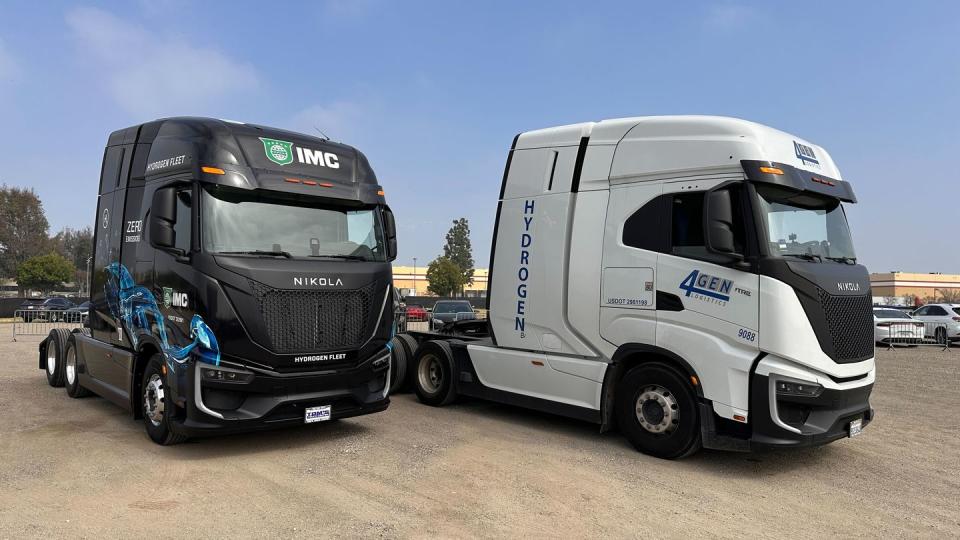

Where should new stations for cars be located?
Station location decisions are much easier to determine when it comes to heavy freight transportation because commercial trucks follow very predictable routes, especially when moving from port to warehouse to port. Cars tend to spread out over a much larger area, so figuring out where to place hydrogen stations to serve them is a relative nightmare. This Ontario station is close to an unusually dense concentration of warehouses and rail lines, and the 500-mile fully loaded range of the Nikola Tre FCHEV, which has a loaded GVWR of 82,000 pounds, is more than enough to make trips to Northern California . When they get there, First Element, a consortium that is also building hydrogen fueling facilities for commercial freight, has a station in Oakland, California, that will allow round-trip travel and extend further into the state.
Will there be a national network like Tesla?
HYLA plans to open several more stations in California in the coming months, with the easily permitted above-ground configurations like this one turning into permanent underground stations as it matures, at which point the above-ground units can hop on to become another gas station sow. node at a different location. Their short-term goal is to cover the Interstate 5 corridor from San Diego to Seattle, but there are rumors of programs in other states that could lead to a more national network. We remember a time when the nascent Tesla Supercharger network consisted of just six stations – all in California – and look where we are today.
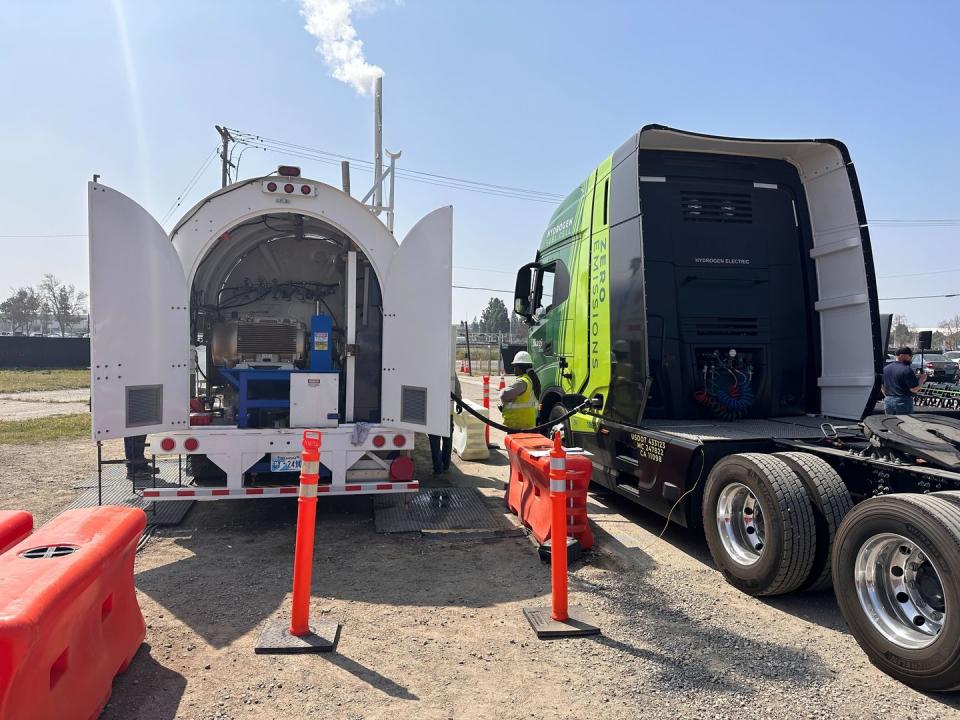

Riding high in the TRE
Meanwhile, driving the Tre FCHEV Class 8 semi is quite an experience. It’s a flat-front truck, the kind that has fallen out of favor in recent decades because the diesels of the day vibrated and smelled a lot for a driver sitting directly on top of the engine compartment. But this cab type offers advantages in visibility and turning circle, so the quietness of an electric powertrain and associated fuel cell ‘stack’ allowed Nikola to revive this configuration without bringing back these major historical drawbacks. This so-called “day cab” truck (as opposed to a condo-style long-haul sleeper) weighs approximately 22,600 pounds, which compares to 20,000 pounds for a diesel with the same level of cab amenities. This extra weight is one reason why Nikola’s loaded GVWR is allowed to be 82,000 pounds instead of the usual legal maximum of 80,000 pounds.
The electric powertrain powered by the hydrogen fuel cell stack can deliver 536 ‘continuous’ horsepower, which is a more relevant way to categorize engine power in the trucking industry. The 500-mile range assumes a mostly flat ride that starts and ends at about the same elevation, but global product head Christian Appel told us that the significant uphill ride from Nikola’s Coolidge, Arizona, base (elevation 4,424 feet) to Flagstaff, Arizona ( altitude 6,821 feet), consumes hydrogen at a rate equivalent to a still impressive range of 450 miles. Meanwhile, ‘bobtailing’ without a trailer (something transport companies don’t do because there’s no money in it) can deliver a range of almost 700 miles. Filling from completely empty to 100 percent full is even less of a thing in a huge hydrogen semi than in a civilian EV, so the typical fill time of 20 to 100 percent is more relevant, which takes ‘less than 20 minutes’.
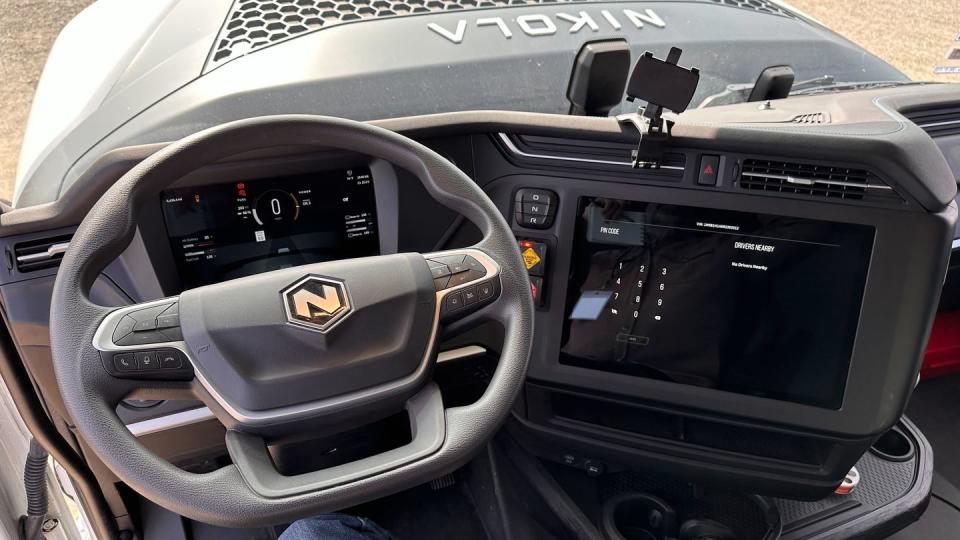

Once inside, the first thing you notice is that there is no gear lever, because the electric drivetrain is directly driven and has only one gear. There’s a drive/neutral/reverse selector, a big button for the parking brake, and that’s about it. Gear jammers do not need to be applied. The accelerator and brake pedals would make it feel like a pickup if it weren’t for the huge, nearly horizontal bus-like steering wheel that all large semis have. The seats and cabin are also air-suspended.
On the road, the bottomless torque of electric drive can be felt, even from the right seat. It’s also completely smooth, due to the complete absence of shifting. One of the steering levers can increase the level of regeneration, but we’re told that one-pedal driving isn’t really a thing when there’s a fully loaded trailer behind it. Like any vehicle powered by electric motors, it’s quiet here, but we were still surprised to find that the loudest sound in the cabin by far was the clicking of the turn signals. It’s no wonder that the drivers who work for Biagi Brothers, an early Nikola customer based in Northern California that has 10 Tres in their fleet, “fight” to drive them.
Whatever you’ve heard about the viability of hydrogen as an automotive fuel in the wake of Shell’s recently announced withdrawal, don’t assume that means hydrogen has no future. Shell has specifically said that they are withdrawing from the crisis light passenger car market. Hydrogen may not be the right solution for cars, but its relatively quick refueling time, long range under load and the simpler logistics of building a network that only needs to follow existing truck routes mean that hydrogen definitely still has a role to play for freight transport. company. The fact that Nikola has started fueling with their HYLA brand makes it more likely that they too will be around for the long haul.
You might also like it